5 Game-Changing Customer Experience Trends for Retailers in 2024
To thrive, retailers must prioritize CX, weaving technology and empathy into a seamless journey that delights customers and fuels loyalty.
Read moreA positive customer experience often translates into higher customer lifetime value and increased referrals, proving to be a key driver of sustainable growth.

Beyond product or price, a brand’s true differentiator lies in the customer experience it crafts. It encompasses every touchpoint a customer has with a company, from initial awareness to post-purchase interactions. Positive customer experiences are pivotal in fostering loyalty and retention, as satisfied customers are more likely to become brand advocates. Exceptional CX builds trust, enhances brand reputation, and cultivates long-term relationships. It is a strategic differentiator in today’s competitive landscape, driving customer loyalty and repeat business.
Understanding the gap between customer expectations and the current reality is the first step toward delivering exceptional CX customer experiences. Quinnox recognizes the criticality of CX, offering tailored solutions to enhance customer interactions and elevate brand perception through innovative and customer-centric strategies.
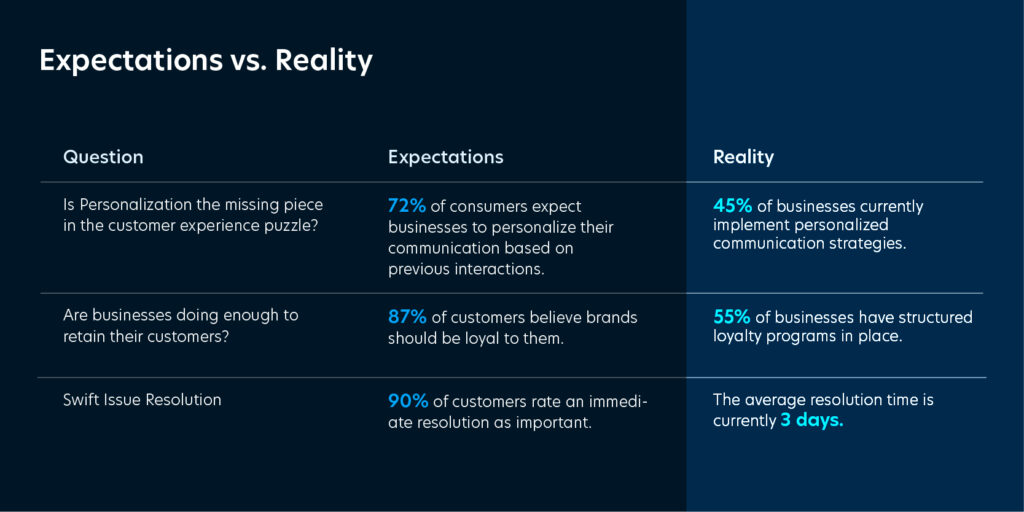
The modern business landscape is a labyrinth of touchpoints, channels, and demands. How do you navigate this complexity and emerge triumphant? The answer lies in Customer Experience Management (CXM) – the key to transforming chaos into customer loyalty by delivering seamless and personalized experiences at every turn.
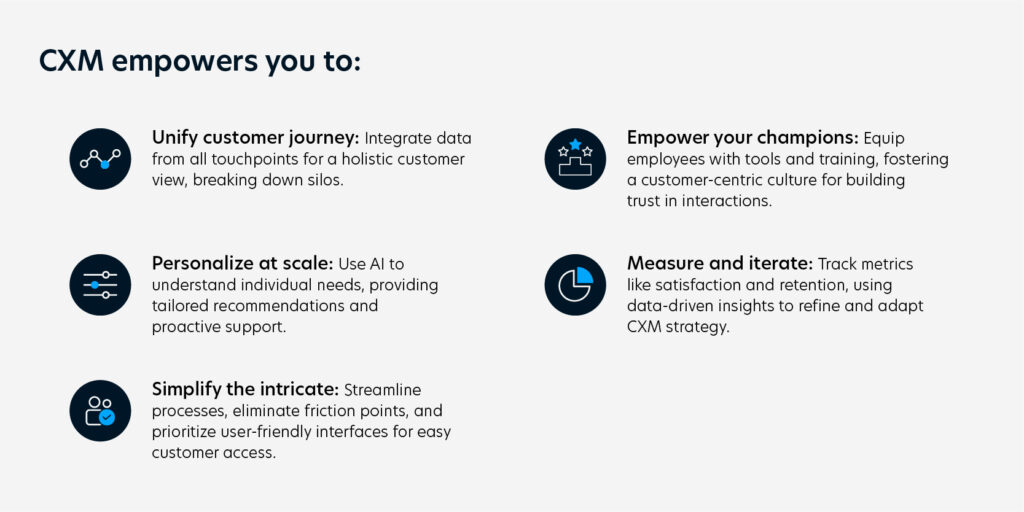
Ready to tame the complexity and unlock the power of exceptional customer experiences? Quinnox can help you in embracing CXM and watch your business flourish.
Read More on how to improve your Customer Experience here.
The process of selecting a CX platform involves a meticulous evaluation of key features. Choosing wisely ensures a smooth integration that enhances overall customer satisfaction, contributing to long-term business success.
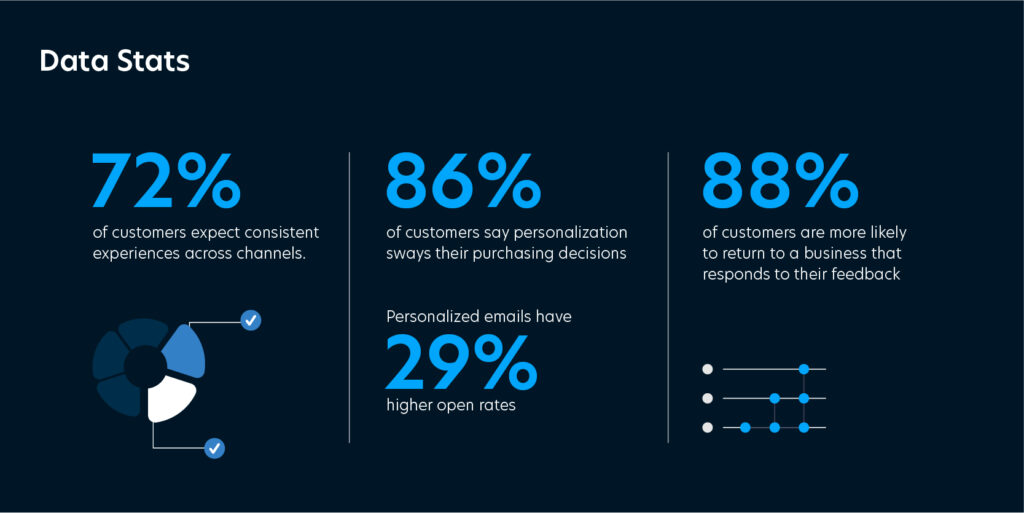
Dive into the realm of customer experience analytics and revolutionize the way you connect with your audience.
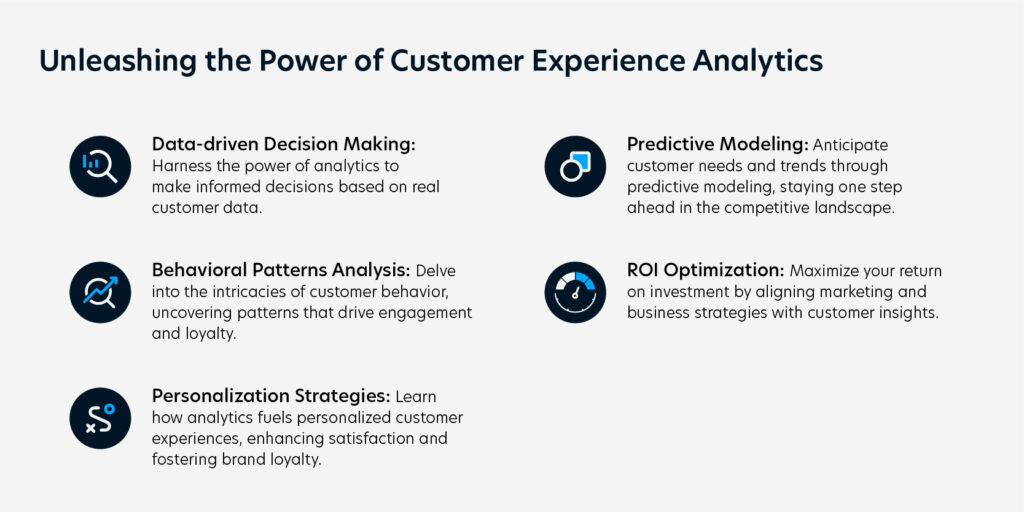
Read More about Customer Experience Analytics here.
Calculating Customer experience (CX) and return on investment (ROI) is crucial for businesses aiming to enhance customer satisfaction and loyalty. The process involves quantifying the impact of CX initiatives on financial outcomes.
ROI = (Returns – Investment) / Investment * 100.
This will provide a percentage that represents the return on investment from your customer experience efforts.
To simply this process, consider using the following Customer Experience ROI Calculator. Input your data, and the calculator will automatically compute the ROI for you.
According to a Salesforce report, for 80% of consumers, customer experience is just as important as the products they purchase. In fact, in the same survey, 66% of respondents agreed that they expect companies to understand their needs, but unfortunately only 34% of brands actualIy do.
Positive customer experiences lead to repeat business, and moreover it’s easier and less expensive for a business to retain clients than to attract new customers. Knowing if customers are happy or not is crucial for all brands and enterprises, but getting to that one answer is complex. This is where businesses can use a variety of CX metrics together for the most complete picture of the customer’s journey with their brand.
CSAT measures the level of customer satisfaction with a specific interaction or experience. It usually involves rating scales or survey questions to gather feedback on customer satisfaction levels.
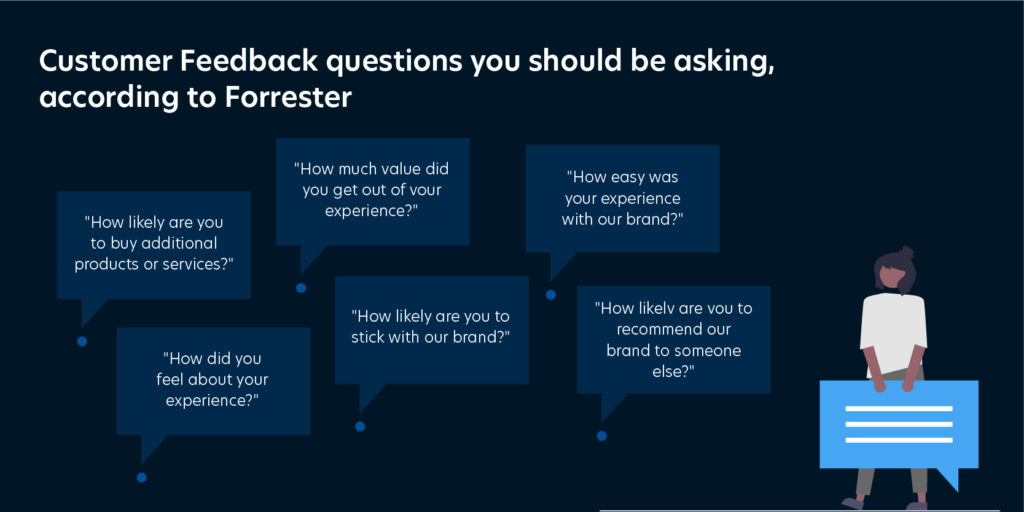
NPS determines customer loyalty by asking customers how likely they are to recommend a product or service to others on a scale of 0-10.
CES focuses on the effort customers put into their interactions with a business. It measures the ease of use and convenience of a product or service, allowing organizations to identify and address pain points.
CLV quantifies the total value a customer brings to a business over their entire relationship. It helps businesses understand the long-term impact and profitability of their customer base.
Churn rate calculates the percentage of customers who stop using a product or service over a given period. Tracking churn helps identify customer dissatisfaction and retention challenges.
The customer retention rate measures the percentage of customers retained over a specific period. It indicates how successful a business is at retaining its existing customer base.
ART measures the average time it takes for customer support or success teams to resolve customer inquiries. A low ART signifies a responsive and efficient customer service team, while a higher ART suggests inefficiency, potentially leading to dissatisfied customers and increased costs.
Using analytics tools, businesses can analyze customer journeys to identify pain points, areas for improvement, and moments of delight. It provides a holistic view of the end-to-end customer experience.
Analyzing customer support ticket trends helps identify recurring issues and areas where customer experience may be impacted. It allows businesses to proactively address customer concerns and improve support processes.
Digital customer experience (DCX) has become a cornerstone in modern business strategies, shaping multiple interactions on multiple channels between brands and customers online.
Elevating brand perception, nurturing loyalty, orchestrating seamless online journeys, digital customer experience is not merely a facet but the pivotal force steering businesses towards excellence in the digital realm.
As per Forrester’s Budget Planning Survey 2023, more than half of US CX leaders plan to build capabilities in technologies that help them understand customer insights and customers’ experiences with the brand.
Creating personalized experiences that resonate well with the audience across all digital channels is key to get to the topmost hierarchy of CX.
Read the Forrester Study report: Digital transformation for employee and customer experiences
The complexity of the customer journey demands moving from multiple touchpoints from websites to mobile apps to develop an Omni channel experience. As consumers increasingly navigate the digital landscape, enhancing experience isn’t just strategic, it’s a commitment to excellence that resonates with every click, tap and interaction.
In addition to reaching consumers in their journey, a seamless digital experience is crucial when it comes to customer satisfaction.
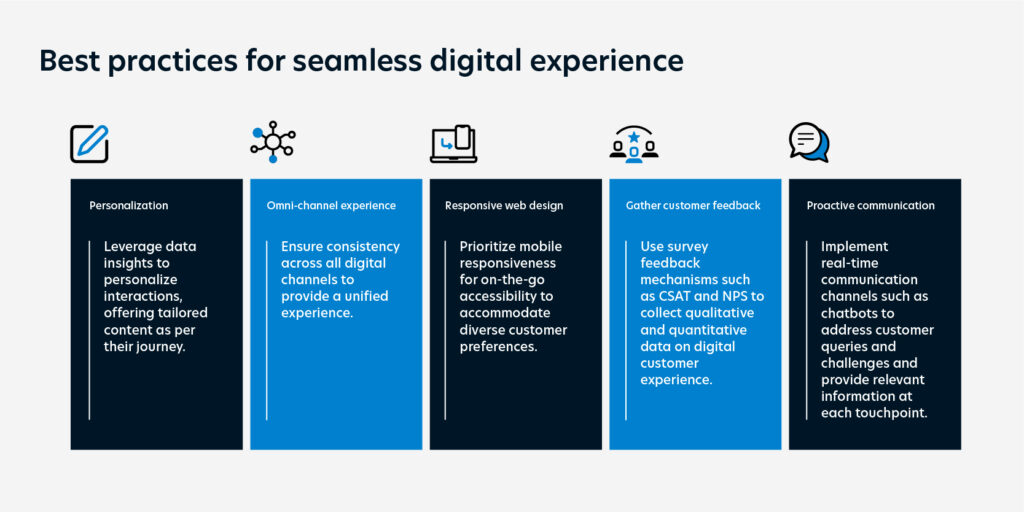
Read more on the profound benefits of Digital Customer Experience here.
A holistic digital customer experience strategy requires delivering an Omni channel experience that can elevate and captivate the audience through a purposeful approach to their interactions. It involves covering all the customer touchpoints and interactions to tailor the solutions
Watch the Webinar on elevating customer and employee experiences.
The retail experience plays a vital role in setting businesses apart. While factors like price, value, and service are still significant, it is the all-encompassing and occasionally elusive customer experience that truly transforms a casual browser into a dedicated brand advocate.
Retail customer experience refers to the overall impression and satisfaction that customers have when interacting with a retail brand throughout their buying journey. At its core, the retail customer experience encompasses every touchpoint, from browsing products online to visiting physical stores, making purchases, and receiving post-sales support.
According to research by PwC, 73% of consumers consider experience as an important factor in their purchasing decisions, and 32% are willing to leave a brand they love after just one bad experience.
But most retailers struggle to provide exceptional customer experience that leads to improved loyalty and business performance. This is where technology intervention can prove beneficial for retailers. With personalized recommendations, seamless checkout processes, and interactive virtual experiences, technology can make shopping more convenient, engaging, and tailored to individual preferences. Here are some ways technology can help improve the overall customer experience:
To know more on how retailers can implement these technologies – Click Here.
CX is everything that an organization does to deliver value to customers and build loyalty towards their brand. But today, with so many options available in every industry, loyalty is fickle, and brand trust hangs in the balance; Customer Experience (CX) reigns supreme. Yet, navigating the world of CX software can be riddled with uncertainties. From banking giants to retail innovators, leaders like you stand on the precipice of revolutionizing customer journeys. But before leaping, let’s demystify the magic of CX software and answer the questions that keep you up at night.
Think of it as your CX alchemist, transforming scattered data into actionable insights. It orchestrates every touchpoint – from pre-purchase inquiries to post-sales support – weaving together a seamless tapestry of your brand story. It listens to your customers through surveys, tracks their digital footprints, and even analyzes their social media whispers. Armed with this intel, you can personalize interactions, proactively address pain points, and nurture loyalty like never before.
Think growth-hacking magic:
The answer lies in your measurement:
It is a collaborative effort:
Both, in a beautiful symbiosis:
Ask yourself:
If not, it’s time to revisit your software choices and data analysis strategies.
Personalization is key:
Every interaction should be a mini-love letter, strengthening the bond between your brand and your customers.
The choice is yours. Embrace its potential, invest in data-driven decision-making, and watch your customer experience blossom. It’s not just about software, it’s about a cultural shift, a commitment to putting your customers at the heart of everything you do. Remember, happy customers are loyal customers, and loyal customers are your growth engine.
So, leaders, are you ready to unlock the magic of CX software and transform your business? The choice is yours. Make it bold, make it customer-centric, and watch your brand soar to new heights.
Framework for Choosing the Right Customer Experience Platform (CXP)
Do’s:
Don’ts:
Do’s:
Don’ts:
Do’s:
Don’ts:
Do’s:
Don’ts:
Do’s:
Don’ts:
Do’s:
Don’ts:
Ready to take the next step? Contact us today and let’s craft a personalized CX strategy that makes your customers fall in love with your brand, all over again.
How Customer Experience drives business growth?
Positive customer experiences foster loyalty, repeat business, and word-of-mouth referrals, driving customer acquisition and retention, ultimately leading to increased revenue and sustained business growth.
Why do I need customer experience management?
Customer experience management ensures a consistent, positive interaction with your brand, enhancing customer satisfaction. It helps build brand loyalty, boosts customer retention, and contributes to long-term business success.
What are the biggest challenges in delivering good CX?
Businesses often face challenges such as inconsistent customer service, lack of personalization, difficulty in adapting to changing customer expectations and integrating data across multiple channels. Overcoming these challenges requires a holistic approach to enhancing the overall customer experience.
How can I measure the ROI of CX initiatives?
To measure ROI, compare the cost of CX initiatives to increased revenue, customer retention, and satisfaction. Analyze key metrics like NPS and customer lifetime value over time for comprehensive evaluation.
What are the different stages of customer journeys?
The customer journey typically includes stages such as awareness, consideration, purchase, retention, and advocacy. Each stage represents a customer’s interaction and experience with a brand, from initial discovery to long-term loyalty.
How can I use customer journey mapping to improve CX?
Customer journey mapping involves visualizing the entire customer experience, identifying pain points, and optimizing touchpoints for a smoother interaction. This process helps businesses understand customer perspectives and make informed improvements.
How can I handle negative customer feedback?
Address negative feedback promptly and empathetically. Use it as an opportunity to learn, improve processes, and showcase a commitment to customer satisfaction. Respond professionally, offer solutions, and take proactive steps to prevent similar issues in the future.
What technologies can help improve digital customer experience?
Technologies such as AI-driven chatbots, data analytics, and personalization tools can enhance Digital Customer Experience (DCX) by providing efficient, personalized, and responsive interactions.
What are some emerging trends in Digital CX improvement?
Emerging trends in Digital CX improvement include the integration of AI and machine learning for predictive analytics, augmented reality for immersive experiences, and the use of voice interfaces.

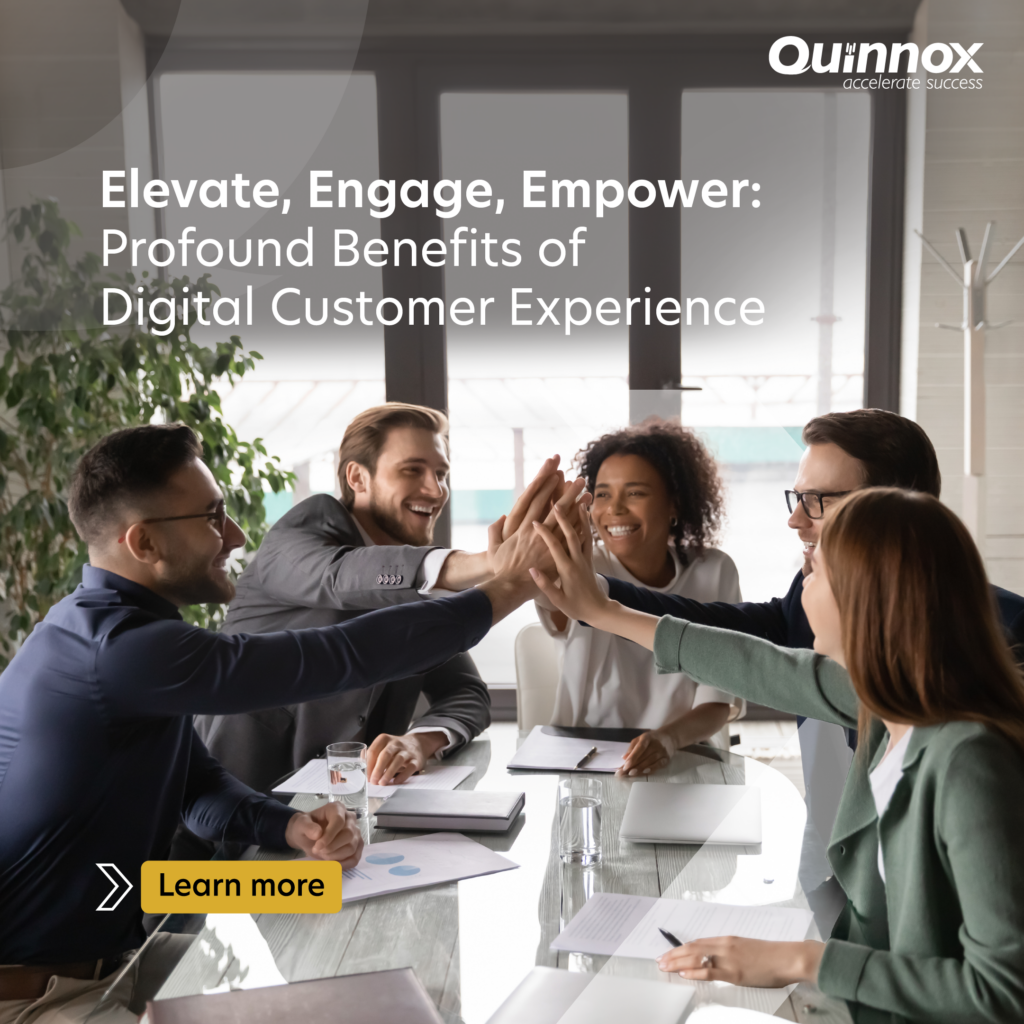
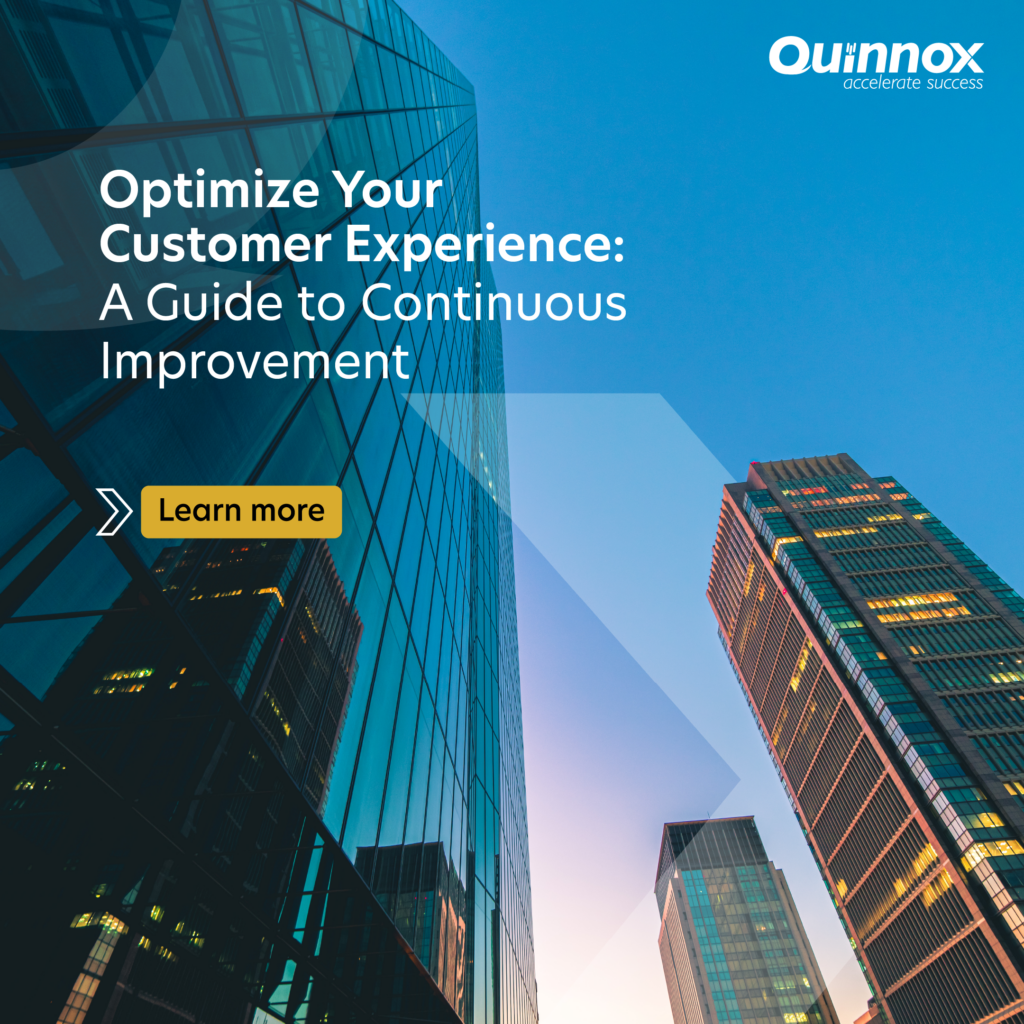
Want more CX content? Check interesting blogs below!
To thrive, retailers must prioritize CX, weaving technology and empathy into a seamless journey that delights customers and fuels loyalty.
Read moreAs we step into 2024, the dynamics of customer expectations and technological advancements are reshaping the way financial institutions interact with their clients.
Read moreAccording to a recent Forrester study, a whopping 84% of insurance customer experience professionals prioritize CX improvement today, compared to just 63% in 2019. Customer experience (CX) is no longer an "optional extra" for insurance companies – it's the engine driving growth and loyalty in 2024.
Read moreDownload the ISG Provider Lens® Report on AMS Platforms.
Download Report
Join Carlos Casanova (Forrester) for a webinar on AIOps & Intelligent Twin Power! Master modernization, harness AIOps, achieve impactful outcomes. Seats limited – Reserve now!
Register for webinar
Get in touch with Quinnox Inc to understand how we can accelerate success for you.